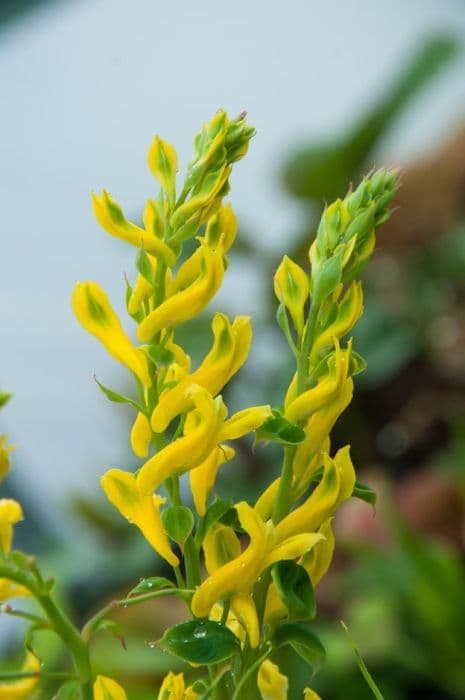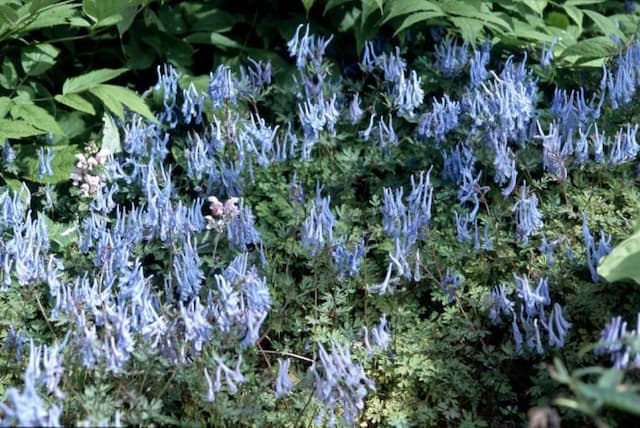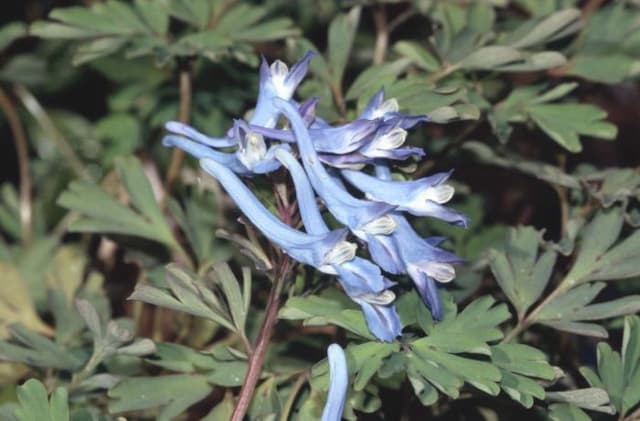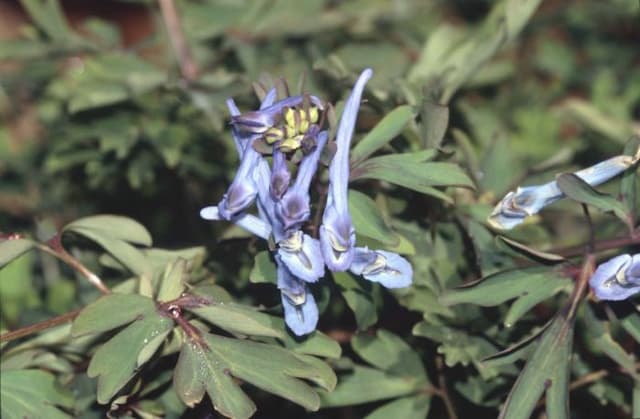Iceland Poppy Papaver nudicaule Gartenzwerg Group

ABOUT
The Papaver nudicaule Gartenzwerg Group, commonly known as the Dwarf Iceland Poppy, features a delicate and colorful display that is charming and whimsical. The appearance of this plant is marked by its bright, satiny flowers that come in a variety of hues including yellow, white, orange, pink, and sometimes with shades of red. The petals are often slightly crinkly, resembling crepe paper which adds to their textural beauty. These flowers are borne on slender stalks that rise gracefully above the foliage. The leaves of the Dwarf Iceland Poppy form a basal rosette at the base of the plant. They are typically a blue-green or gray-green color and present a finely divided appearance that can be described as feathery or fern-like. The contrast between the vivid flowers and the muted foliage creates a striking visual effect in garden settings. Notably enchanting are the delicate flower buds that start off enclosed in a protective fuzzy wrapping before blooming into their full splendor. This plant adds a touch of whimsy and a splash of color to gardens, drawing the attention of onlookers and pollinators alike.
About this plant
 Names
NamesFamily
Papaveraceae
Synonyms
Arctic Poppy, Iceland Poppy, Dwarf Garden Poppy
Common names
Papaver miyabeanum, Papaver croceum, Papaver amurense, Papaver macounii, Papaver coreanum.
 Toxicity
ToxicityTo humans
The plant in question, commonly known as Icelandic poppy, does contain toxic alkaloids. These toxic compounds can be found throughout the plant, including the seeds, stems, leaves, and flowers. If any part of the Icelandic poppy is ingested, it can potentially lead to symptoms such as gastrointestinal upset, characterized by nausea, vomiting, and diarrhea. Additionally, central nervous system effects might occur, like dizziness, headache, and even sedation. Though the plant is not considered to be among the most toxic to humans, caution is still advised. Ingesting larger quantities can lead to more severe symptoms, and medical attention should be sought in the case of suspected poisoning.
To pets
Icelandic poppy is also toxic to pets due to the same alkaloids present in the plant. If a pet ingests any part of the Icelandic poppy, they could experience symptoms similar to those in humans, including gastrointestinal upset with signs like drooling, vomiting, and diarrhea. Neurologic symptoms such as incoordination or sedation could also manifest. It's important to prevent pets from ingesting this plant, and in the event that a pet does consume any part of an Icelandic poppy, it is advised to contact a veterinarian promptly to manage the poisoning and minimize potential consequences.
 Characteristics
CharacteristicsLife cycle
Perennials
Foliage type
Deciduous
Color of leaves
Green
Flower color
Varies
Height
1 foot (30 cm)
Spread
1 foot (30 cm)
Plant type
Herb
Hardiness zones
2
Native area
Subarctic
Benefits
 General Benefits
General Benefits- Aesthetic Appeal: Adds vibrant colors and unique textures to gardens with its delicate, cup-shaped flowers.
- Attracts Pollinators: Helps to support local ecosystems by attracting bees, butterflies, and other pollinating insects.
- Seasonal Interest: Brings visual interest to the landscape in late spring to early summer when it typically blooms.
- Cold Hardy: Adapts to cooler climates and can survive frost, making it suitable for northern gardens.
- Low Maintenance: Requires minimal care once established, making it ideal for low-maintenance landscaping.
- Drought Tolerant: Once established, it has low water requirements and can thrive in drier conditions.
- Varied Uses: Can be used in a variety of garden settings, such as borders, rock gardens, and as a cut flower.
 Medical Properties
Medical Properties- This plant is not used for medical purposes.
 Air-purifying Qualities
Air-purifying QualitiesThis plant is not specifically known for air purifying qualities.
 Other Uses
Other Uses- Iceland poppy's dried seed pods can be used in floral arrangements, giving a unique texture and visual interest with their pepper-shaker like appearance.
- The vibrant petals of the Iceland poppy, safely used, can add a pop of color to salads or desserts as an edible garnish.
- Due to their distinctive shape and vivid colors, Iceland poppies are popular subjects for photography and botanical illustration.
- Iceland poppies can be planted as companions in vegetable gardens to attract pollinators, thus increasing the yield of vegetable crops.
- The silk-like petals of the Iceland poppy can inspire artists and fabric designers to create natural patterns in their works.
- Planting Iceland poppies in school gardens can serve as a hands-on educational tool for teaching children about the lifecycle of plants.
- The Iceland poppy can be used as a natural dye source for fabrics, yielding soft yellow to green hues depending on the mordant used.
- In colder climates, Iceland poppies can be grown in containers and brought indoors during harsh winter periods for a burst of color.
- Paper made from the fibers of the Iceland poppy can be used for crafting and scrapbooking, giving the finished product a unique texture.
- As a low-maintenance plant, Iceland poppies can be used in urban and community gardening projects to bring beauty to under-utilized spaces.
Interesting Facts
 Feng Shui
Feng ShuiThe Iceland Poppy is not used in Feng Shui practice.
 Zodiac Sign Compitability
Zodiac Sign CompitabilityThe Iceland Poppy is not used in astrology practice.
 Plant Symbolism
Plant Symbolism- Peace and Rest: The plant commonly known as Iceland Poppy often symbolizes peace because poppies have been associated with sleep and thus, tranquility.
- Remembrance: Similar to other poppies, Iceland Poppies are also a symbol for remembrance of the fallen soldiers, especially those of World War I.
- Resilience: As a plant that can grow in harsh, cold climates, the Iceland Poppy signifies hardiness and the ability to endure difficult conditions.
- Beauty and Consolation: With its delicate appearance, the Iceland Poppy represents beauty, as well as offering consolation in times of death or sorrow.
- Ephemeral Nature of Life: The short-lived bloom of an Iceland Poppy can symbolize the fleeting nature of existence, reminding us to appreciate the present.
 Water
WaterThe Icelandic Poppy should be watered deeply but infrequently to encourage a deep root system. It's best to water these plants once a week with about one to two gallons per square yard, depending on the weather conditions. The soil should be allowed to dry out between waterings, so if there has been rain, it may not be necessary to water at all. Over-watering or watering too frequently can lead to root rot, so ensure the soil is well-draining. Always check the top inch of soil for dryness before watering again.
 Light
LightThe Icelandic Poppy thrives under full sun conditions, which means it needs at least six hours of direct sunlight each day to perform best. They should be placed in a location where they will receive plenty of morning sunlight and protection from intense afternoon heat if possible. These lighting conditions will help ensure an abundance of blooms.
 Temperature
TemperatureIcelandic Poppies prefer cooler temperatures and will start to decline once temperatures consistently reach above 75°F. They can survive minimum temperatures down to about 20°F, but for optimal growth and flowering, a range between 50°F and 65°F is ideal. Protect the plants from extreme heat by providing shade or mulch to keep the root zone cool.
 Pruning
PruningIcelandic Poppies should be deadheaded regularly to encourage more blooms and prevent self-seeding if not desired. Cutting back the stems after the first flush of flowers can also sometimes promote a second bloom. The best time to prune is right after the blooms have faded, snipping the stems close to the base of the plant.
 Cleaning
CleaningAs needed
 Soil
SoilThe Iceland Poppy thrives in well-draining soil with a mix of sand, loam, and organic compost. A pH of 6.0 to 7.0 is ideal for this plant.
 Repotting
RepottingIceland Poppies do not transplant well due to their taproots, so repotting is usually unnecessary and best avoided.
 Humidity & Misting
Humidity & MistingThe Iceland Poppy prefers a dry climate; it does not require high humidity levels to thrive.
 Suitable locations
Suitable locationsIndoor
Ensure bright light, cool temps, and minimal water for indoor Iceland Poppies.
Outdoor
Plant in full sun with well-draining soil and space for growth.
Hardiness zone
2-9 USDA
 Life cycle
Life cycleThe Icelandic poppy (Papaver nudicaule Gartenzwerg Group) starts its life when seeds are sown in late summer to early fall, germinating in cool temperatures. As a cool-weather plant, it develops a rosette of fuzzy leaves that can survive through light frosts and snow cover of winter. In the following spring, the plant bolts, sending up stems that will bear the signature colorful, cup-shaped, and often fringed flowers. After flowering from late spring to early summer, the Icelandic poppy sets seed within capsule-like structures that release seeds once dry. These seeds can then disperse in the environment, beginning a new generation if conditions are favorable. As a perennial in mild climates or a biennial in colder regions, it may come back from its root stock the next year or rely on seed propagation to continue its life cycle.
 Propogation
PropogationPropogation time
Spring-Early Summer
Propogation: The Iceland Poppy, or Papaver nudicaule Gartenzwerg Group, is a popular flowering perennial that is most commonly propagated by seeds. Seed sowing can be done directly into the garden where temperatures are around 55 to 65 degrees Fahrenheit (13 to 18 degrees Celsius). The best time to sow seeds is during spring or fall. Sowing in autumn can lead to early spring blooms whereas sowing in spring will result in summer flowering. Seeds should be scattered lightly on the soil surface, as they need light to germinate, and should not be covered with soil but can be gently pressed into the earth. It usually takes about 14 to 21 days for the seeds to germinate, and seedlings can be thinned to about 6 to 10 inches (15 to 25 centimeters) apart to allow for ample growing space.









